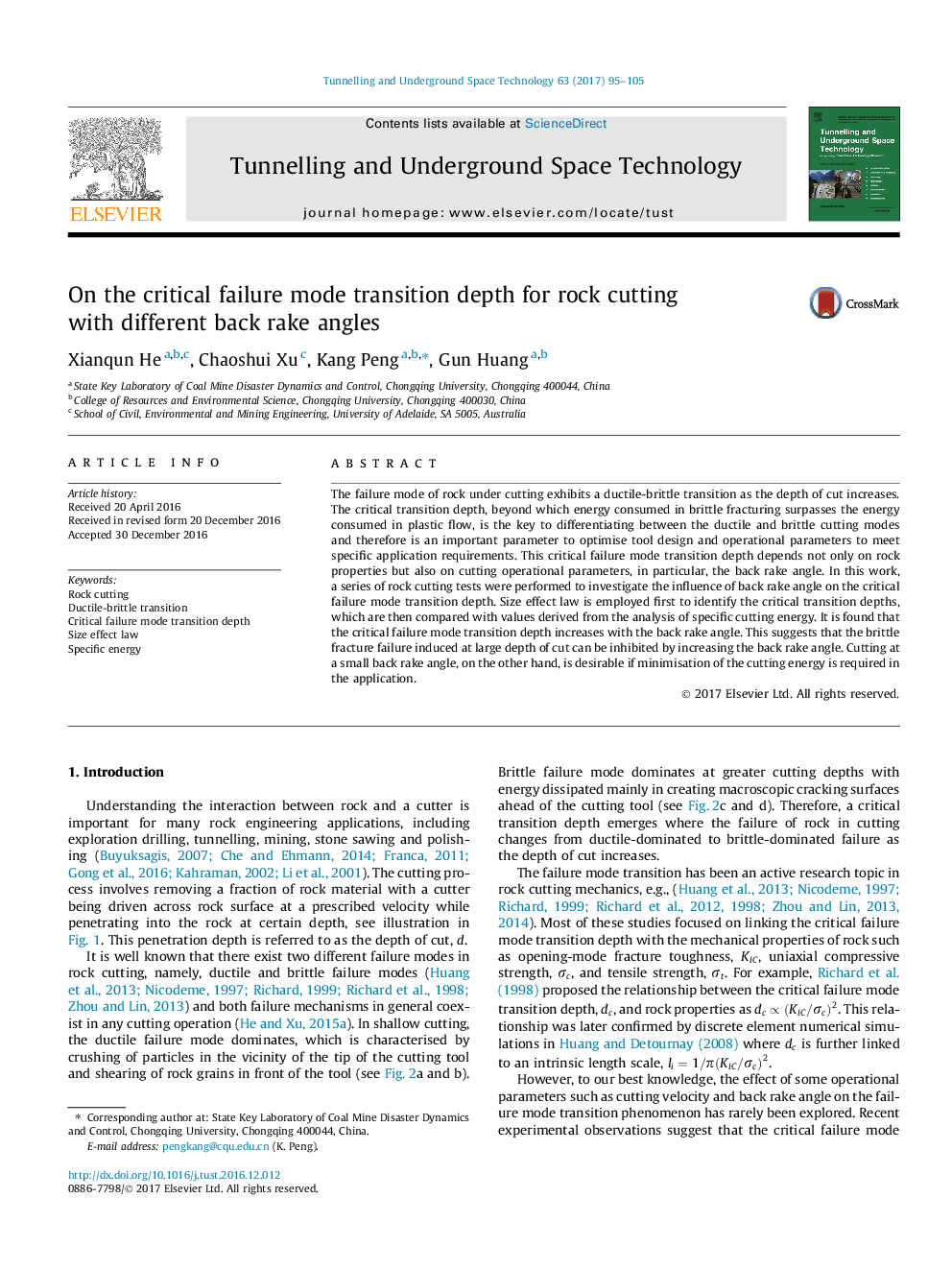| Article ID | Journal | Published Year | Pages | File Type |
|---|---|---|---|---|
| 4929375 | Tunnelling and Underground Space Technology | 2017 | 11 Pages |
Abstract
The failure mode of rock under cutting exhibits a ductile-brittle transition as the depth of cut increases. The critical transition depth, beyond which energy consumed in brittle fracturing surpasses the energy consumed in plastic flow, is the key to differentiating between the ductile and brittle cutting modes and therefore is an important parameter to optimise tool design and operational parameters to meet specific application requirements. This critical failure mode transition depth depends not only on rock properties but also on cutting operational parameters, in particular, the back rake angle. In this work, a series of rock cutting tests were performed to investigate the influence of back rake angle on the critical failure mode transition depth. Size effect law is employed first to identify the critical transition depths, which are then compared with values derived from the analysis of specific cutting energy. It is found that the critical failure mode transition depth increases with the back rake angle. This suggests that the brittle fracture failure induced at large depth of cut can be inhibited by increasing the back rake angle. Cutting at a small back rake angle, on the other hand, is desirable if minimisation of the cutting energy is required in the application.
Related Topics
Physical Sciences and Engineering
Earth and Planetary Sciences
Geotechnical Engineering and Engineering Geology
Authors
Xianqun He, Chaoshui Xu, Kang Peng, Gun Huang,
